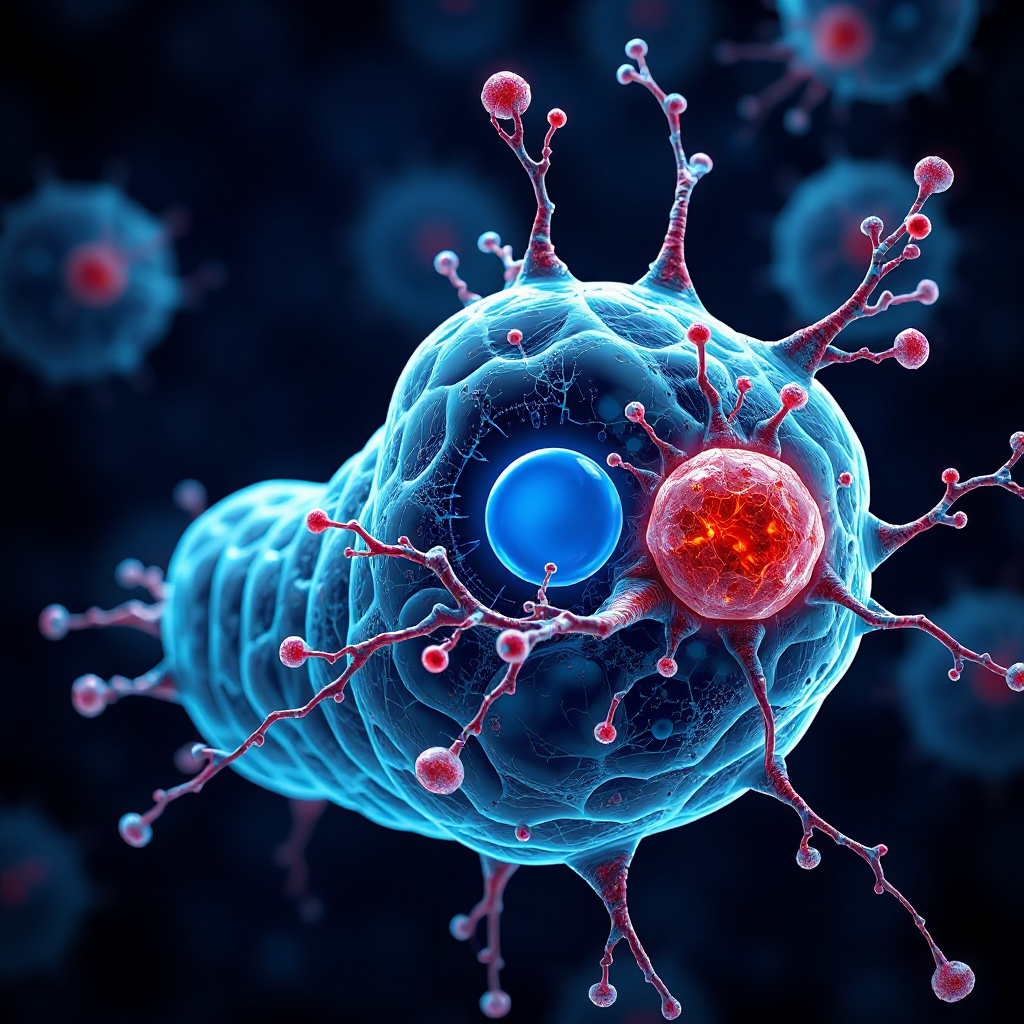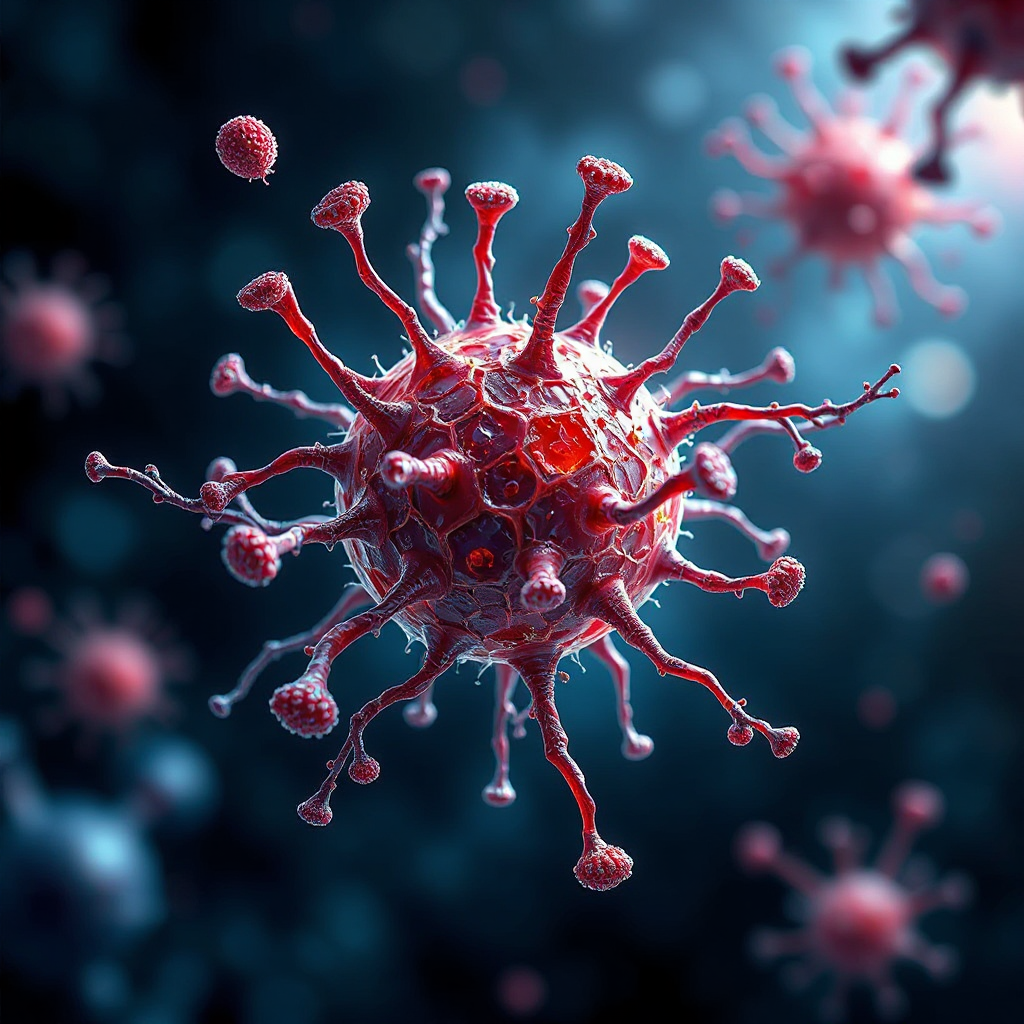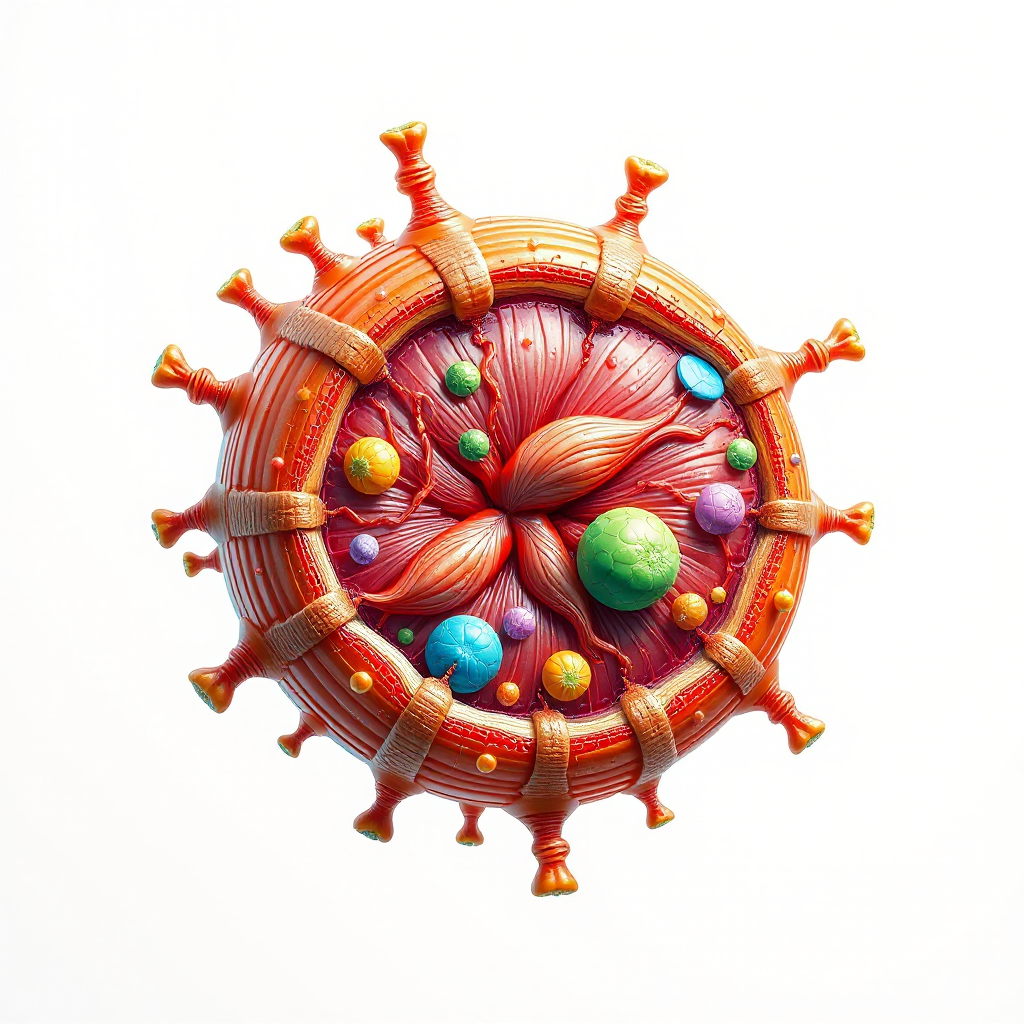What is Rhabdomyosarcoma and How Does it Affect the Body

Rhabdomyosarcoma is a rare type of cancer that develops in soft tissues, such as muscles, and primarily affects children and teenagers. It accounts for about 3% of all childhood cancers, with 400 to 500 new cases diagnosed annually in the United States. Most cases occur in children under 10 years old.
This cancer can cause a range of symptoms depending on the tumor's location. You might notice lumps or swelling in areas like the head, neck, arms, or legs. Tumors near the eye can lead to bulging or vision problems, while those in the chest may cause breathing difficulties. Treatments like chemotherapy and radiation can also result in complications, including eye issues like cataracts or dry eye.
Key Takeaways
Rhabdomyosarcoma is a rare cancer mostly found in kids.
It often grows in soft tissues, like muscles in the body.
Symptoms include lumps, swelling, or pain, depending on where it is.
Doctors use exams and imaging tests to find it early.
Early detection helps with better treatment and recovery chances.
Treatments include surgery, chemotherapy, and radiation to fight the cancer.
Follow-up care is important to check recovery and long-term effects.
What is Rhabdomyosarcoma?

Definition and Overview
Rhabdomyosarcoma is a type of soft tissue sarcoma that begins in early skeletal muscle cells. These cells are responsible for forming the muscles that help you move. This cancer is rare and primarily affects children, especially those under the age of six. It can develop in various parts of the body, including the head, neck, arms, legs, and even internal organs.
This disease has the potential to spread to other areas, such as the lungs, bone marrow, and lymph nodes. Early detection plays a crucial role in managing its impact on your body.
Types of Rhabdomyosarcoma
Rhabdomyosarcoma is classified into several types based on its appearance under a microscope and its location in the body. The two most common types are:
Embryonal Rhabdomyosarcoma (ERMS): This type is more common in younger children. It often develops in the head, neck, bladder, or reproductive organs.
Alveolar Rhabdomyosarcoma (ARMS): This type is more aggressive and typically affects older children and teenagers. It usually appears in the arms, legs, chest, or abdomen.
Other less common types include spindle cell/sclerosing rhabdomyosarcoma, which can be aggressive, and pleomorphic rhabdomyosarcoma, which is rare in children.
Risk Factors
Certain genetic and environmental factors can increase your risk of developing rhabdomyosarcoma. Genetic syndromes like Li-Fraumeni syndrome, Beckwith-Wiedemann syndrome, and Costello syndrome are linked to this cancer. Specific genetic mutations, such as the PAX/FOXO1 fusion gene, are also associated with the disease.
Environmental factors may include exposure to radiation, certain chemicals, or viral infections during pregnancy or early childhood. Parental use of substances like marijuana or cocaine and intrauterine exposure to X-rays may also contribute to the risk.
Understanding these risk factors can help you stay informed and proactive about your health.
Symptoms of Rhabdomyosarcoma
General Symptoms
Rhabdomyosarcoma often presents with symptoms that vary depending on the tumor's location and size. However, some general signs can help you identify potential issues early.
You might notice a lump or swelling in areas like the neck, chest, back, arms, legs, or groin. These lumps may feel firm and could cause pain or redness.
Pain is another common symptom, especially if the tumor presses on nearby nerves or tissues.
In some cases, you may experience unexplained weight loss, weakness, or fatigue.
If the cancer spreads to other parts of the body, additional symptoms like bone pain, persistent coughing, or lumps under the skin may appear. Recognizing these signs early can help you seek medical attention promptly.
Symptoms by Tumor Location
The symptoms of rhabdomyosarcoma can differ significantly based on where the tumor develops in your body.
Tumors near the eye may cause bulging, a cross-eyed appearance, or vision problems.
If the tumor is in the ear or nasal sinuses, you might experience earaches, headaches, nosebleeds, or sinus congestion.
Tumors in the bladder or prostate can lead to blood in your urine, while vaginal tumors may cause unusual bleeding.
Abdominal or pelvic tumors often result in belly pain, vomiting, or constipation.
Rarely, tumors in the bile ducts can cause jaundice, leading to yellowing of the skin and eyes.
Each symptom provides clues about the tumor's location, helping doctors determine the best diagnostic and treatment approach. Paying attention to these signs can make a significant difference in managing rhabdomyosarcoma effectively.
How Rhabdomyosarcoma Affects the Body

Local Effects of Tumor Growth
Rhabdomyosarcoma can cause significant changes in the area where the tumor grows. These effects depend on the tumor's location and size. For example, tumors in the nasal passages may lead to nasal discharge or block your airway, making it harder to breathe. If the tumor develops in the ear, you might notice otorrhea (ear discharge) or experience hearing loss.
In some cases, the tumor can create a foul smell, known as fetor, which may be noticeable to those around you. Tumors near the eye can cause rapid proptosis, where the eye bulges outward. If the tumor presses on nearby nerves, it may result in cranial nerve palsies or other neurological issues, such as difficulty moving certain parts of your face. These local effects can disrupt daily activities and require prompt medical attention.
Systemic Effects and Complications
When rhabdomyosarcoma spreads beyond its original site, it can affect your entire body. This process, called metastasis, often involves the lungs, lymph nodes, or bone marrow. You might feel unusually tired or weak as your body struggles to fight the disease. Weight loss and a lack of appetite are also common systemic effects.
The spread of cancer can weaken your immune system, making you more vulnerable to infections. In advanced cases, complications like anemia or difficulty breathing may arise. These systemic effects highlight the importance of early diagnosis and treatment to prevent the cancer from spreading further.
Note: Paying attention to both local and systemic symptoms can help you recognize potential issues early. Early intervention improves your chances of successful treatment and recovery.
Diagnosing Rhabdomyosarcoma
Medical History and Physical Exam
Diagnosing rhabdomyosarcoma begins with a thorough review of your medical history and a detailed physical exam. Your doctor will ask about any symptoms you’ve noticed, such as lumps, swelling, or pain. They may also inquire about your family’s medical history to identify potential genetic risks.
During the physical exam, your doctor will carefully check for unusual lumps or swelling in areas like your head, neck, arms, or legs. These signs can provide important clues about the presence of a tumor. If your doctor suspects rhabdomyosarcoma, they will recommend additional tests to confirm the diagnosis.
Tip: Early detection through a detailed medical history and physical exam can significantly improve treatment outcomes.
Diagnostic Tests
To confirm rhabdomyosarcoma, doctors rely on a variety of diagnostic tests. These tests help determine the tumor’s location, size, and whether it has spread to other parts of your body. Common diagnostic tools include:
Imaging Tests: X-rays, CT scans, MRI scans, and PET scans provide detailed pictures of the tumor and surrounding tissues.
Ultrasound: This test uses sound waves to create images of soft tissues and can help identify abnormalities.
Bone Scans: These scans detect whether cancer has spread to your bones.
Biopsies: A small sample of the tumor is removed and examined under a microscope to confirm the diagnosis.
Bone Marrow Aspiration and Biopsy: These tests check if cancer has spread to your bone marrow.
Lumbar Puncture (LP): This test examines cerebrospinal fluid to detect cancer cells in the central nervous system.
Each test provides valuable information, helping your doctor create a personalized treatment plan. By combining these diagnostic methods, doctors can accurately assess the extent of the disease and recommend the best course of action.
Treatment Options for Rhabdomyosarcoma
Surgery
Surgery plays a critical role in treating rhabdomyosarcoma. Doctors aim to remove the tumor while preserving as much healthy tissue as possible. The surgical approach depends on the tumor's location and size. Here are some common techniques used during surgery:
Surgical Technique | Description |
|---|---|
Limb-sparing surgery | Removes the tumor and a margin of healthy tissue, often followed by reconstructive methods. |
Organ-sparing surgery | Focuses on removing the tumor while preserving the organ, sometimes requiring reconstructive surgery. |
Reconstructive methods | Includes skin grafts, muscle flaps, and bone flaps to restore function after tumor removal. |
Amputation | In rare cases, amputation may be necessary if limb-sparing surgery is not feasible. |
Your doctor will choose the best surgical method based on your specific condition. Surgery is often combined with other treatments to ensure the best outcome.
Radiation Therapy
Radiation therapy is another effective treatment for rhabdomyosarcoma, especially when surgery cannot completely remove the tumor. This therapy uses high-energy rays to destroy cancer cells and shrink tumors. It is often used after surgery to target any remaining cancer cells.
However, radiation therapy can cause side effects. Short-term effects include fatigue, skin reactions, and nausea. Long-term effects may include growth problems, dental issues, and an increased risk of secondary cancers. You might also experience emotional challenges, such as anxiety or difficulty concentrating. Despite these risks, radiation therapy remains a vital tool in managing this cancer.
Tip: Discuss potential side effects with your doctor to prepare for and manage them effectively.
Chemotherapy
Chemotherapy is essential in treating rhabdomyosarcoma. It uses powerful drugs to kill cancer cells throughout your body. Doctors often use chemotherapy after surgery to eliminate any remaining cancer cells. In some cases, it is administered before surgery to shrink the tumor, making it easier to remove.
The VAC protocol (Vincristine, Actinomycin-D, and Cyclophosphamide) is commonly used for patients with intermediate or metastatic rhabdomyosarcoma. While chemotherapy improves survival rates, its effectiveness depends on the cancer's stage and type. You may experience side effects like nausea, fatigue, and an increased risk of infections. Despite these challenges, chemotherapy significantly improves your chances of recovery.
Targeted Therapy and Clinical Trials
Targeted therapy offers a promising approach to treating rhabdomyosarcoma by focusing on specific genetic changes in cancer cells. Unlike traditional treatments, targeted therapy aims to block the growth and spread of cancer while minimizing damage to healthy tissues. For example, drugs like pazopanib work by inhibiting enzymes that tumors need to grow. This method can be particularly effective for certain types of rhabdomyosarcoma.
Clinical trials play a crucial role in advancing treatment options. Researchers are currently studying new therapies for patients with recurrent or advanced rhabdomyosarcoma. These trials often explore innovative drugs and combinations of treatments, such as chemotherapy agents like ifosfamide and doxorubicin. You can search for clinical trials supported by the National Cancer Institute (NCI) based on factors like age, cancer type, and location. Participating in a clinical trial may provide access to cutting-edge treatments that are not yet widely available.
Tip: If you or a loved one is considering targeted therapy or a clinical trial, consult your doctor to determine the best options for your situation.
Supportive Care
Supportive care focuses on improving your quality of life during and after treatment for rhabdomyosarcoma. Emotional and psychosocial support can help you cope with anxiety, depression, and other challenges that may arise. Joining a support group or speaking with a counselor can provide valuable emotional relief.
Rehabilitation services also play a key role in recovery. Physical therapy can help you regain strength and mobility, while nutritional support ensures your body gets the nutrients it needs to heal. Regular follow-up care is essential for monitoring your progress and managing any long-term effects of treatment. These appointments allow your healthcare team to address potential issues early and adjust your care plan as needed.
Note: Supportive care is just as important as medical treatment. It helps you maintain your physical and emotional well-being throughout your journey.
Prognosis and Outlook
Factors Influencing Prognosis
Several factors can influence how well you or a loved one might respond to treatment for rhabdomyosarcoma. These factors help doctors predict outcomes and tailor treatment plans. The table below highlights the most significant prognostic factors:
Prognostic Factor | Description |
|---|---|
Tumor Subtype | Alveolar subtype is linked to worse outcomes compared to the embryonal subtype. |
Age at Diagnosis | Younger patients tend to have better outcomes than older ones. |
Tumor Size | Tumors smaller than 5 cm are associated with a more favorable prognosis. |
Extent of Disease | Patients with no residual disease after surgery have a survival rate of up to 90%. |
Nutritional Status | Abnormal BMI can negatively impact overall survival in children. |
Metastatic Disease | The presence of metastatic disease, especially in older patients, leads to the poorest outcomes. |
Understanding these factors can help you stay informed and proactive during treatment discussions. Early diagnosis and effective management improve the chances of a positive outcome.
Importance of Follow-Up Care
Follow-up care plays a vital role in ensuring long-term health after treatment for rhabdomyosarcoma. Regular monitoring helps detect any recurrence early. Your doctor may recommend periodic blood tests and imaging scans, with the frequency decreasing over time. After five years, annual check-ups at a late-effects clinic become essential.
Long-term follow-up care also addresses the unique challenges survivors face. Multidisciplinary support services can help manage medical, emotional, and developmental needs. These services ensure you receive the care needed to thrive after treatment. By staying committed to follow-up care, you can maintain your health and address any potential complications early.
Tip: Keep a detailed record of your follow-up appointments and test results. This helps you track your progress and stay on top of your health.
Rhabdomyosarcoma is a rare cancer that starts in skeletal muscle cells and can develop in various parts of the body. Key points to remember include:
It often appears in areas like the head, neck, arms, legs, and urinary or reproductive organs.
Symptoms depend on the tumor's location and size, such as lumps, swelling, pain, or bleeding.
Diagnosis involves imaging tests and biopsies, while treatment options include surgery, chemotherapy, and radiation therapy.
Follow-up care is essential for monitoring recovery and managing long-term effects.
Early diagnosis and treatment improve survival rates by addressing the cancer at a more treatable stage. If you notice unusual symptoms, consult a doctor promptly. Taking action early can make a significant difference in your health.
FAQ
What causes rhabdomyosarcoma?
Rhabdomyosarcoma develops due to genetic mutations in early skeletal muscle cells. These mutations cause uncontrolled cell growth. While some cases link to genetic syndromes like Li-Fraumeni, most occur without a clear cause. Environmental factors, such as radiation exposure, may also play a role.
Is rhabdomyosarcoma hereditary?
Most cases of rhabdomyosarcoma are not hereditary. However, certain genetic conditions, like Beckwith-Wiedemann syndrome or Costello syndrome, can increase your risk. If you have a family history of these conditions, consider discussing genetic testing with your doctor.
How is rhabdomyosarcoma different from other cancers?
Rhabdomyosarcoma starts in skeletal muscle cells, unlike most cancers that develop in organs or other tissues. It primarily affects children and teenagers. Its symptoms and treatment depend on the tumor's location, making it unique compared to other cancers.
Can rhabdomyosarcoma be cured?
Yes, rhabdomyosarcoma can be cured, especially when diagnosed early. Treatments like surgery, chemotherapy, and radiation therapy improve survival rates. Your prognosis depends on factors like tumor size, location, and whether it has spread.
What should you do if you suspect rhabdomyosarcoma?
If you notice unusual symptoms like lumps, swelling, or pain, consult a doctor immediately. Early diagnosis improves treatment outcomes. Your doctor may recommend imaging tests or a biopsy to confirm the diagnosis.
Tip: Keep track of any persistent symptoms and share them with your healthcare provider for accurate evaluation.
See Also
Chondrosarcoma Explained: Key Symptoms You Should Know
Recognizing Leiomyosarcoma: Symptoms You Need to Watch For
Fibrosarcoma Overview: Understanding Its Main Characteristics
